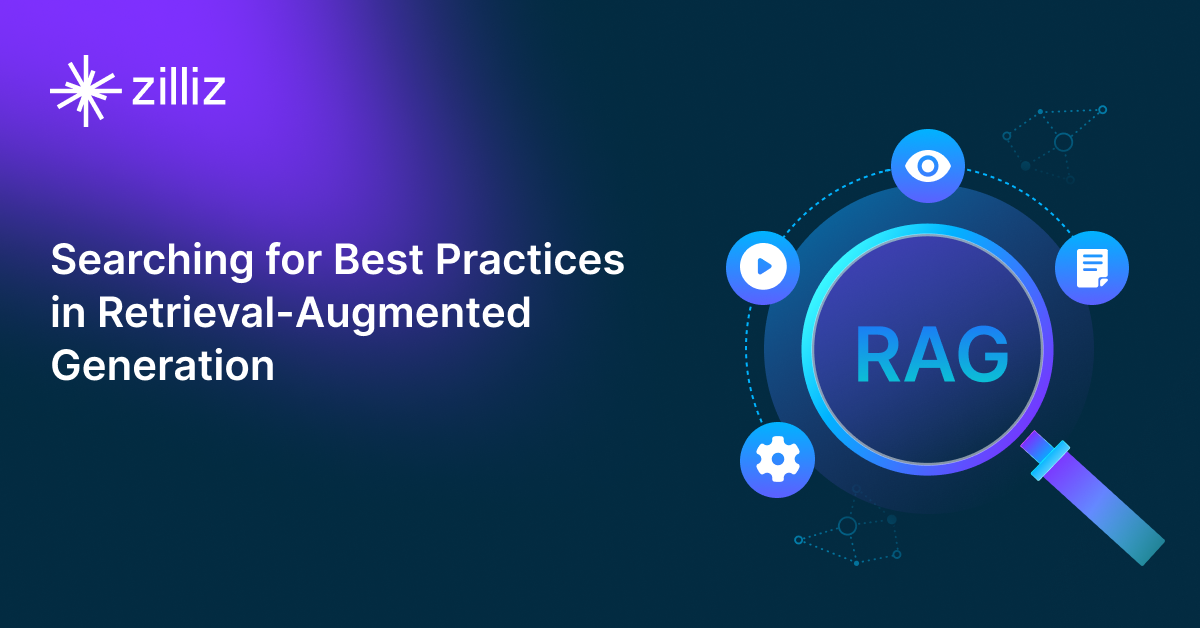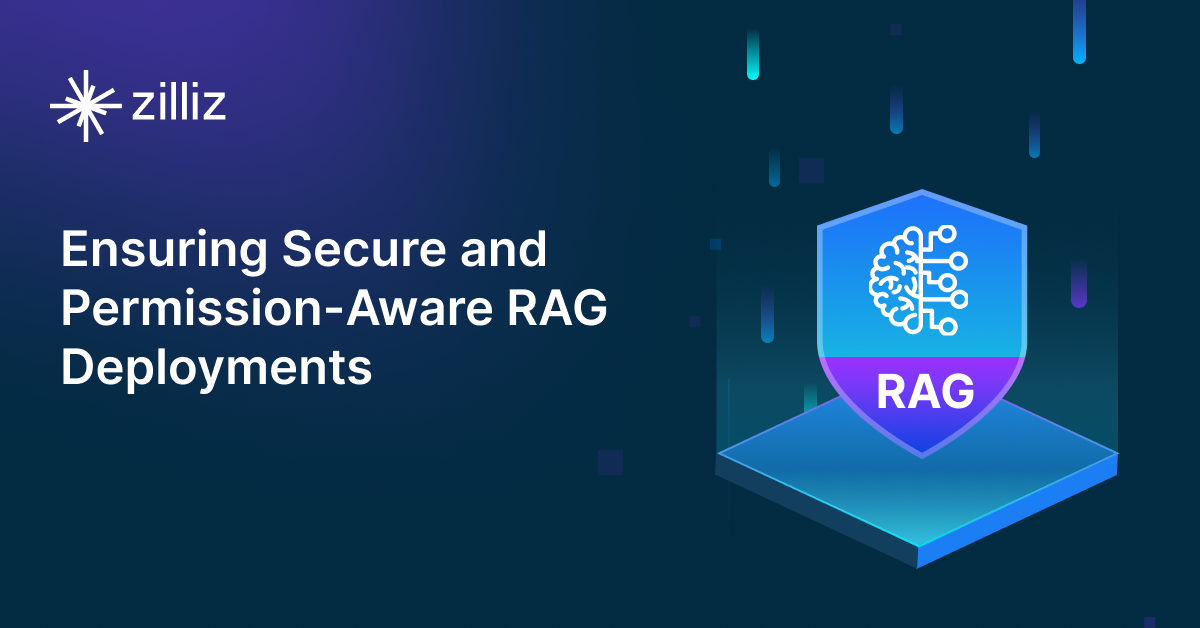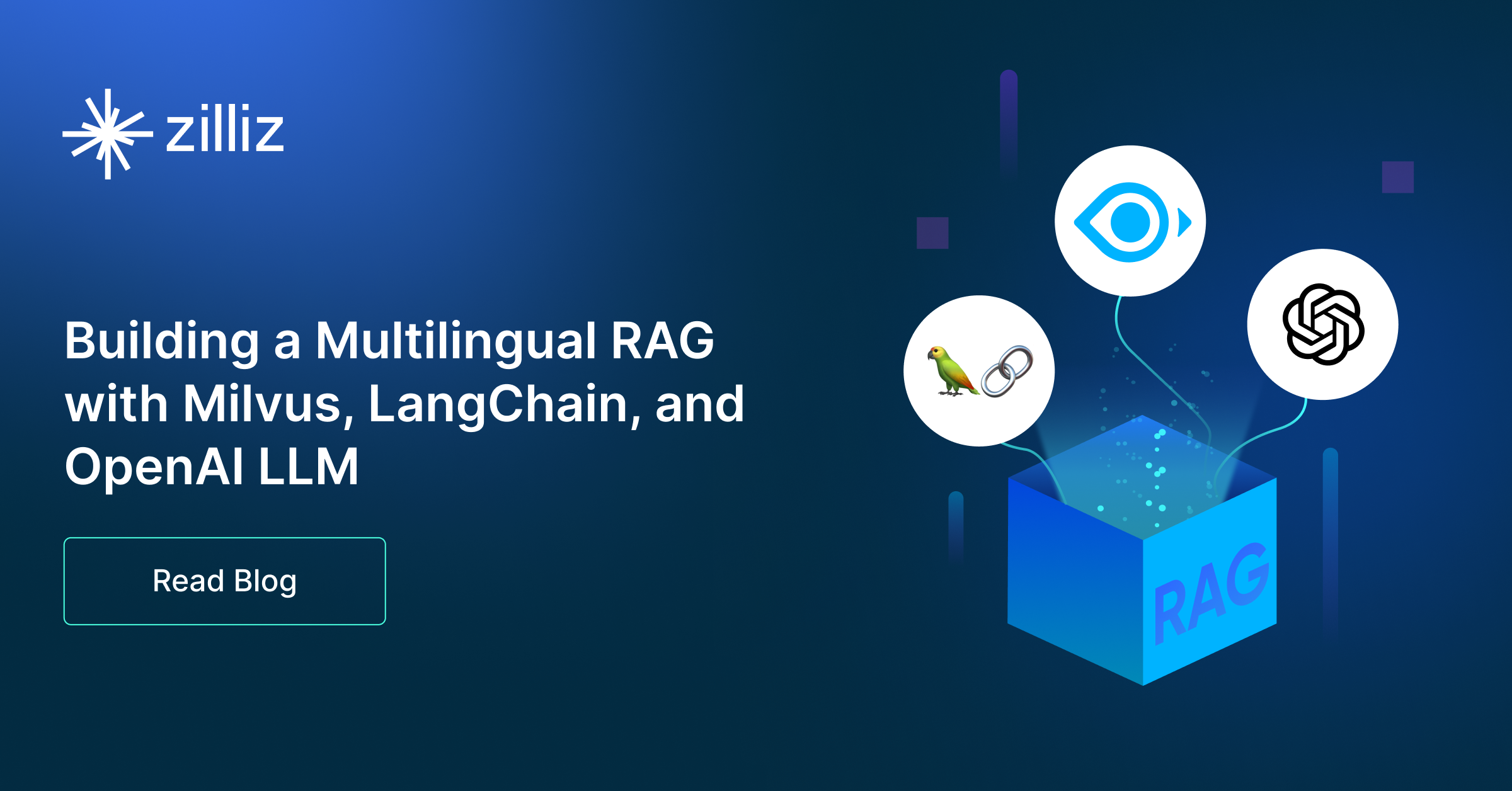Build RAG Chatbot with Haystack, Pgvector, Anthropic Claude 3 Opus, and AmazonBedrock cohere embed-english-v3
Introduction to RAG
Retrieval-Augmented Generation (RAG) is a game-changer for GenAI applications, especially in conversational AI. It combines the power of pre-trained large language models (LLMs) like OpenAI’s GPT with external knowledge sources stored in vector databases such as Milvus and Zilliz Cloud, allowing for more accurate, contextually relevant, and up-to-date response generation. A RAG pipeline usually consists of four basic components: a vector database, an embedding model, an LLM, and a framework.
Key Components We'll Use for This RAG Chatbot
This tutorial shows you how to build a simple RAG chatbot in Python using the following components:
- Haystack: An open-source Python framework designed for building production-ready NLP applications, particularly question answering and semantic search systems. Haystack excels at retrieving information from large document collections through its modular architecture that combines retrieval and reader components. Ideal for developers creating search applications, chatbots, and knowledge management systems that require efficient document processing and accurate information extraction from unstructured text.
- Pgvector: an open-source extension for PostgreSQL that enables efficient storage and querying of high-dimensional vector data, essential for machine learning and AI applications. Designed to handle embeddings, it supports fast approximate nearest neighbor (ANN) searches using algorithms like HNSW and IVFFlat. Since it is just a vector search add-on to traditional search rather than a purpose-built vector database, it lacks scalability and availability and many other advanced features required by enterprise-level applications. Therefore, if you prefer a much more scalable solution or hate to manage your own infrastructure, we recommend using Zilliz Cloud, which is a fully managed vector database service built on the open-source Milvus and offers a free tier supporting up to 1 million vectors.)
- Anthropic Claude 3 Opus: A state-of-the-art multimodal AI model designed for complex reasoning, advanced analysis, and nuanced content creation. Its strengths include exceptional contextual understanding, accuracy in technical or specialized domains, and ethical alignment. Ideal for strategic business planning, academic research, and sophisticated AI-driven applications requiring high-level cognitive capabilities.
- AmazonBedrock Cohere Embed-English-v3: A state-of-the-art text embedding model designed to convert English text into high-dimensional vector representations, excelling in semantic understanding and scalability. Its strengths include robust performance in semantic search, clustering, and retrieval-augmented generation (RAG), making it ideal for applications like recommendation systems, document similarity analysis, and AI-driven content organization within enterprise workflows.
By the end of this tutorial, you’ll have a functional chatbot capable of answering questions based on a custom knowledge base.
Note: Since we may use proprietary models in our tutorials, make sure you have the required API key beforehand.
Step 1: Install and Set Up Haystack
import os
import requests
from haystack import Pipeline
from haystack.components.converters import MarkdownToDocument
from haystack.components.preprocessors import DocumentSplitter
from haystack.components.writers import DocumentWriter
Step 2: Install and Set Up Anthropic Claude 3 Opus
To use Anthropic models, you need an Anthropic API key. You can provide this key in one of the following ways:
- The recommended approach is to set it as the
ANTHROPIC_API_KEYenvironment variable. - Alternatively, you can pass it directly when initializing the component using Haystack’s Secret API:
Secret.from_token("your-api-key-here").
When configuring Anthropic models, make sure to define the Anthropic model you want to use by specifying it in the model parameter.
This component generates text based on a given prompt. Additionally, you can customize the generation process by providing extra parameters available in the Anthropic Messaging API. These parameters can be passed using generation_kwargs, either during initialization or when calling the run() method. To explore all available options, refer to the Anthropic documentation.
Finally, the run() method requires a single string as input to generate text.
Now let's install the anthropic-haystack package to use the AnthropicGenerator:
pip install anthropic-haystack
from haystack_integrations.components.generators.anthropic import AnthropicGenerator
generator = AnthropicGenerator(model="claude-3-opus-latest")
Step 3: Install and Set Up AmazonBedrock cohere embed-english-v3
Amazon Bedrock is a fully managed service that makes high-performing foundation models from leading AI startups and Amazon available through a unified API.
To use embedding models on Amazon Bedrock for text and document embedding together with Haystack, you need to initialize an AmazonBedrockTextEmbedder and AmazonBedrockDocumentEmbedderwith the model name, the AWS credentials (aws_access_key_id, aws_secret_access_key, and aws_region_name) should be set as environment variables, be configured as described above or passed as Secret arguments. Note, make sure the region you set supports Amazon Bedrock.
Now, let's start installing and setting up models with Amazon Bedrock.
pip install amazon-bedrock-haystack
import os
from haystack_integrations.components.embedders.amazon_bedrock import AmazonBedrockTextEmbedder
from haystack_integrations.components.embedders.amazon_bedrock import AmazonBedrockDocumentEmbedder
from haystack.dataclasses import Document
os.environ["AWS_ACCESS_KEY_ID"] = "..."
os.environ["AWS_SECRET_ACCESS_KEY"] = "..."
os.environ["AWS_DEFAULT_REGION"] = "us-east-1" # just an example
text_embedder = AmazonBedrockTextEmbedder(model="cohere.embed-english-v3",
input_type="search_query"
document_embedder = AmazonBedrockDocumentEmbedder(model="cohere.embed-english-v3",
input_type="search_document"
Step 4: Install and Set Up Pgvector
To quickly set up a PostgreSQL database with pgvector, you can use Docker:
docker run -d -p 5432:5432 -e POSTGRES_USER=postgres -e POSTGRES_PASSWORD=postgres -e POSTGRES_DB=postgres ankane/pgvector
To use pgvector with Haystack, install the pgvector-haystack integration:
pip install pgvector-haystack
import os
from haystack_integrations.document_stores.pgvector import PgvectorDocumentStore
from haystack_integrations.components.retrievers.pgvector import PgvectorEmbeddingRetriever
os.environ["PG_CONN_STR"] = "postgresql://postgres:postgres@localhost:5432/postgres"
document_store = PgvectorDocumentStore()
retriever = PgvectorEmbeddingRetriever(document_store=document_store)
Step 5: Build a RAG Chatbot
Now that you’ve set up all components, let’s start to build a simple chatbot. We’ll use the Milvus introduction doc as a private knowledge base. You can replace it your own dataset to customize your RAG chatbot.
url = 'https://raw.githubusercontent.com/milvus-io/milvus-docs/refs/heads/v2.5.x/site/en/about/overview.md'
example_file = 'example_file.md'
response = requests.get(url)
with open(example_file, 'wb') as f:
f.write(response.content)
file_paths = [example_file] # You can replace it with your own file paths.
indexing_pipeline = Pipeline()
indexing_pipeline.add_component("converter", MarkdownToDocument())
indexing_pipeline.add_component("splitter", DocumentSplitter(split_by="sentence", split_length=2))
indexing_pipeline.add_component("embedder", document_embedder)
indexing_pipeline.add_component("writer", DocumentWriter(document_store))
indexing_pipeline.connect("converter", "splitter")
indexing_pipeline.connect("splitter", "embedder")
indexing_pipeline.connect("embedder", "writer")
indexing_pipeline.run({"converter": {"sources": file_paths}})
# print("Number of documents:", document_store.count_documents())
question = "What is Milvus?" # You can replace it with your own question.
retrieval_pipeline = Pipeline()
retrieval_pipeline.add_component("embedder", text_embedder)
retrieval_pipeline.add_component("retriever", retriever)
retrieval_pipeline.connect("embedder", "retriever")
retrieval_results = retrieval_pipeline.run({"embedder": {"text": question}})
# for doc in retrieval_results["retriever"]["documents"]:
# print(doc.content)
# print("-" * 10)
from haystack.utils import Secret
from haystack.components.builders import PromptBuilder
retriever = PgvectorEmbeddingRetriever(document_store=document_store)
text_embedder = AmazonBedrockTextEmbedder(model="cohere.embed-english-v3",
input_type="search_query"
prompt_template = """Answer the following query based on the provided context. If the context does
not include an answer, reply with 'I don't know'.\n
Query: {{query}}
Documents:
{% for doc in documents %}
{{ doc.content }}
{% endfor %}
Answer:
"""
rag_pipeline = Pipeline()
rag_pipeline.add_component("text_embedder", text_embedder)
rag_pipeline.add_component("retriever", retriever)
rag_pipeline.add_component("prompt_builder", PromptBuilder(template=prompt_template))
rag_pipeline.add_component("generator", generator)
rag_pipeline.connect("text_embedder.embedding", "retriever.query_embedding")
rag_pipeline.connect("retriever.documents", "prompt_builder.documents")
rag_pipeline.connect("prompt_builder", "generator")
results = rag_pipeline.run({"text_embedder": {"text": question}, "prompt_builder": {"query": question},})
print('RAG answer:\n', results["generator"]["replies"][0])
Optimization Tips
As you build your RAG system, optimization is key to ensuring peak performance and efficiency. While setting up the components is an essential first step, fine-tuning each one will help you create a solution that works even better and scales seamlessly. In this section, we’ll share some practical tips for optimizing all these components, giving you the edge to build smarter, faster, and more responsive RAG applications.
Haystack optimization tips
To optimize Haystack in a RAG setup, ensure you use an efficient retriever like FAISS or Milvus for scalable and fast similarity searches. Fine-tune your document store settings, such as indexing strategies and storage backends, to balance speed and accuracy. Use batch processing for embedding generation to reduce latency and optimize API calls. Leverage Haystack's pipeline caching to avoid redundant computations, especially for frequently queried documents. Tune your reader model by selecting a lightweight yet accurate transformer-based model like DistilBERT to speed up response times. Implement query rewriting or filtering techniques to enhance retrieval quality, ensuring the most relevant documents are retrieved for generation. Finally, monitor system performance with Haystack’s built-in evaluation tools to iteratively refine your setup based on real-world query performance.
pgvector optimization tips
To optimize pgvector in a Retrieval-Augmented Generation (RAG) setup, consider indexing your vectors using GiST or IVFFlat to significantly speed up search queries and improve retrieval performance. Make sure to leverage parallelization for query execution, allowing multiple queries to be processed simultaneously, especially for large datasets. Optimize memory usage by tuning the vector storage size and using compressed embeddings where possible. To further enhance query speed, implement pre-filtering techniques to narrow down search space before querying. Regularly rebuild indexes to ensure they are up to date with any new data. Fine-tune vectorization models to reduce dimensionality without sacrificing accuracy, thus improving both storage efficiency and retrieval times. Finally, manage resource allocation carefully, utilizing horizontal scaling for larger datasets and offloading intensive operations to dedicated processing units to maintain responsiveness during high-traffic periods.
Anthropic Claude 3 Opus optimization tips
To maximize Claude 3 Opus performance in RAG systems, fine-tune retrieval precision using hybrid search with dense vectors and keyword boosting to align with Opus' reasoning strengths. Structure retrieved context using XML tags for clear document boundaries, and prepend explicit instructions about source prioritization. Experiment with temperature (0.2-0.5) and max tokens to balance creativity vs focus. Implement query rewriting with Opus' own API to clarify ambiguous user inputs before retrieval. Batch process embeddings for frequent documents during indexing to reduce latency. Monitor output quality with hallucination checks against retrieved context.
AmazonBedrock Cohere Embed-English-v3 optimization tips
To optimize Cohere Embed-English-v3 in RAG, preprocess input text by removing redundant whitespace, normalizing casing, and filtering low-relevance content to reduce noise. Use batch embedding generation for bulk documents to minimize API calls and latency. Adjust the input_type parameter (e.g., "document" or "query") to align with use cases for context-aware embeddings. Experiment with chunk sizes (e.g., 256-512 tokens) to balance semantic capture and computational efficiency. Cache frequent or static embeddings to avoid reprocessing. Monitor embedding quality via cosine similarity checks and fine-tune retrieval thresholds for your dataset.
By implementing these tips across your components, you'll be able to enhance the performance and functionality of your RAG system, ensuring it’s optimized for both speed and accuracy. Keep testing, iterating, and refining your setup to stay ahead in the ever-evolving world of AI development.
RAG Cost Calculator: A Free Tool to Calculate Your Cost in Seconds
Estimating the cost of a Retrieval-Augmented Generation (RAG) pipeline involves analyzing expenses across vector storage, compute resources, and API usage. Key cost drivers include vector database queries, embedding generation, and LLM inference.
RAG Cost Calculator is a free tool that quickly estimates the cost of building a RAG pipeline, including chunking, embedding, vector storage/search, and LLM generation. It also helps you identify cost-saving opportunities and achieve up to 10x cost reduction on vector databases with the serverless option.
 Calculate your RAG cost
Calculate your RAG cost
What Have You Learned?
By diving into this tutorial, you’ve unlocked the power of building a RAG system from the ground up, weaving together cutting-edge tools to create something truly intelligent! You learned how Haystack acts as the backbone, orchestrating your RAG pipeline with flexibility and ease, while PgVector steps in as your trusty vector database, storing and retrieving embeddings at lightning speed. The magic happens when Anthropic Claude 3 Opus (via Amazon Bedrock) transforms those retrieved snippets into coherent, context-rich answers, showcasing its knack for understanding nuance and delivering human-like responses. And let’s not forget the Cohere Embed-English-v3 model, which turns raw text into meaningful vectors, ensuring your system “gets” the intent behind every query. Along the way, you picked up optimization gems—like tweaking chunk sizes and balancing cost-performance trade-offs—and even discovered a free RAG cost calculator to keep your projects budget-friendly. How cool is that?
Now, you’re not just following steps—you’re equipped to innovate! Imagine the possibilities: chatbots that feel alive, search engines that read minds, or tools that solve problems before users even ask. This tutorial gave you the blueprint, but the real adventure starts now. Tinker with different models, experiment with hybrid search strategies, or push PgVector’s limits with custom indexes. Remember, every optimization you apply and every creative twist you add could spark the next breakthrough. So, fire up your IDE, embrace the trial-and-error joy, and build something that blows minds. The future of intelligent apps is in your hands—go make it happen! 🚀
Further Resources
🌟 In addition to this RAG tutorial, unleash your full potential with these incredible resources to level up your RAG skills.
- How to Build a Multimodal RAG | Documentation
- How to Enhance the Performance of Your RAG Pipeline
- Graph RAG with Milvus | Documentation
- How to Evaluate RAG Applications - Zilliz Learn
- Generative AI Resource Hub | Zilliz
We'd Love to Hear What You Think!
We’d love to hear your thoughts! 🌟 Leave your questions or comments below or join our vibrant Milvus Discord community to share your experiences, ask questions, or connect with thousands of AI enthusiasts. Your journey matters to us!
If you like this tutorial, show your support by giving our Milvus GitHub repo a star ⭐—it means the world to us and inspires us to keep creating! 💖
- Introduction to RAG
- Key Components We'll Use for This RAG Chatbot
- Step 1: Install and Set Up Haystack
- Step 2: Install and Set Up Anthropic Claude 3 Opus
- Step 3: Install and Set Up AmazonBedrock cohere embed-english-v3
- Step 4: Install and Set Up Pgvector
- Step 5: Build a RAG Chatbot
- Optimization Tips
- RAG Cost Calculator: A Free Tool to Calculate Your Cost in Seconds
- What Have You Learned?
- Further Resources
- We'd Love to Hear What You Think!
Content
Vector Database at Scale
Zilliz Cloud is a fully-managed vector database built for scale, perfect for your RAG apps.
Try Zilliz Cloud for Free


